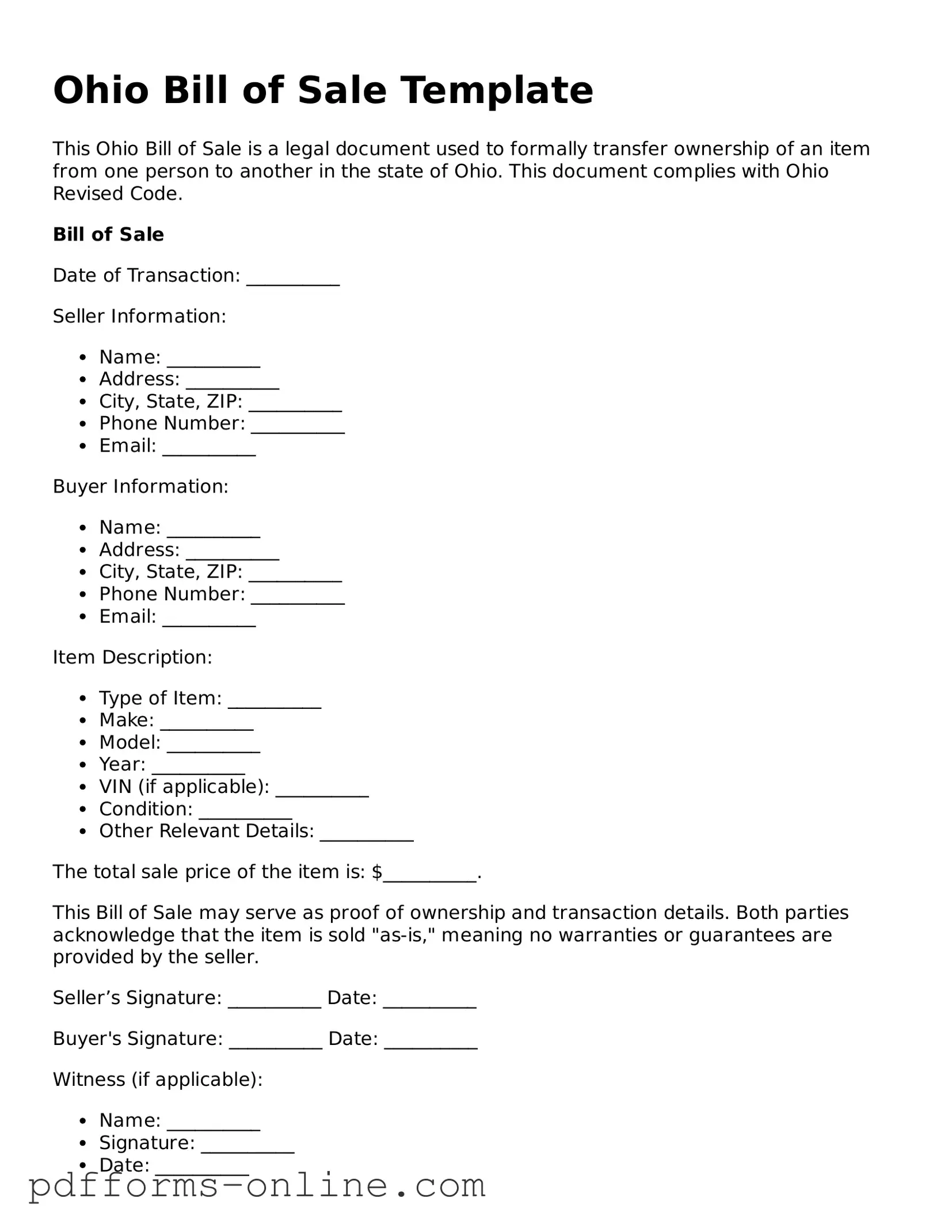Ohio Bill of Sale Template
This Ohio Bill of Sale is a legal document used to formally transfer ownership of an item from one person to another in the state of Ohio. This document complies with Ohio Revised Code.
Bill of Sale
Date of Transaction: __________
Seller Information:
- Name: __________
- Address: __________
- City, State, ZIP: __________
- Phone Number: __________
- Email: __________
Buyer Information:
- Name: __________
- Address: __________
- City, State, ZIP: __________
- Phone Number: __________
- Email: __________
Item Description:
- Type of Item: __________
- Make: __________
- Model: __________
- Year: __________
- VIN (if applicable): __________
- Condition: __________
- Other Relevant Details: __________
The total sale price of the item is: $__________.
This Bill of Sale may serve as proof of ownership and transaction details. Both parties acknowledge that the item is sold "as-is," meaning no warranties or guarantees are provided by the seller.
Seller’s Signature: __________ Date: __________
Buyer's Signature: __________ Date: __________
Witness (if applicable):
- Name: __________
- Signature: __________
- Date: __________
Both parties acknowledge that they have read and understand this Bill of Sale and agree to its terms.
